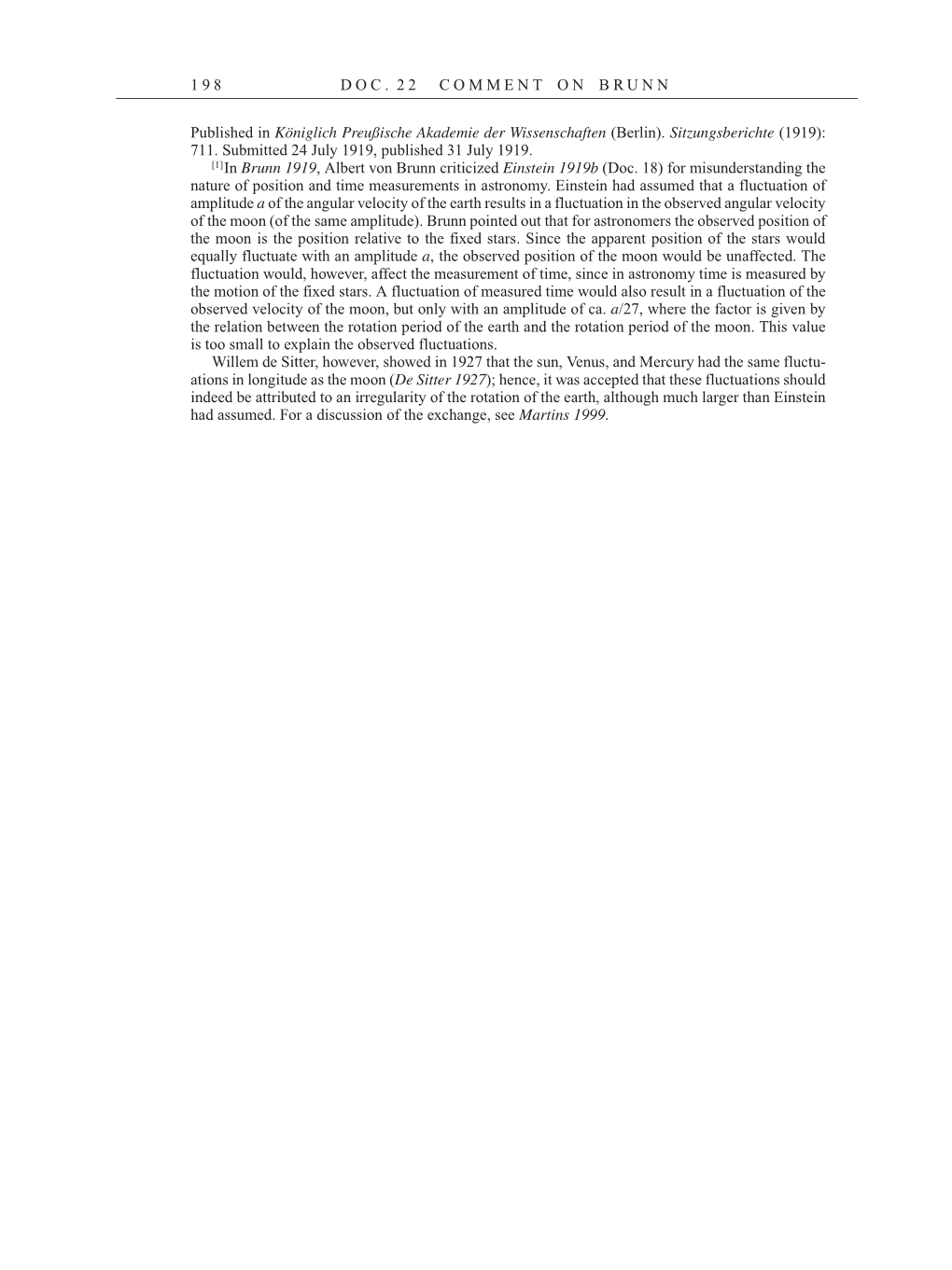1 9 8 D O C . 2 2 C O M M E N T O N B R U N N
Published in Königlich Preußische Akademie der Wissenschaften (Berlin). Sitzungsberichte (1919):
711. Submitted 24 July 1919, published 31 July 1919.
[1]In Brunn 1919, Albert von Brunn criticized Einstein 1919b (Doc. 18) for misunderstanding the
nature of position and time measurements in astronomy. Einstein had assumed that a fluctuation of
amplitude a of the angular velocity of the earth results in a fluctuation in the observed angular velocity
of the moon (of the same amplitude). Brunn pointed out that for astronomers the observed position of
the moon is the position relative to the fixed stars. Since the apparent position of the stars would
equally fluctuate with an amplitude a, the observed position of the moon would be unaffected. The
fluctuation would, however, affect the measurement of time, since in astronomy time is measured by
the motion of the fixed stars. A fluctuation of measured time would also result in a fluctuation of the
observed velocity of the moon, but only with an amplitude of ca. a/27, where the factor is given by
the relation between the rotation period of the earth and the rotation period of the moon. This value
is too small to explain the observed fluctuations.
Willem de Sitter, however, showed in 1927 that the sun, Venus, and Mercury had the same fluctu-
ations in longitude as the moon (De Sitter 1927); hence, it was accepted that these fluctuations should
indeed be attributed to an irregularity of the rotation of the earth, although much larger than Einstein
had assumed. For a discussion of the exchange, see Martins 1999.
